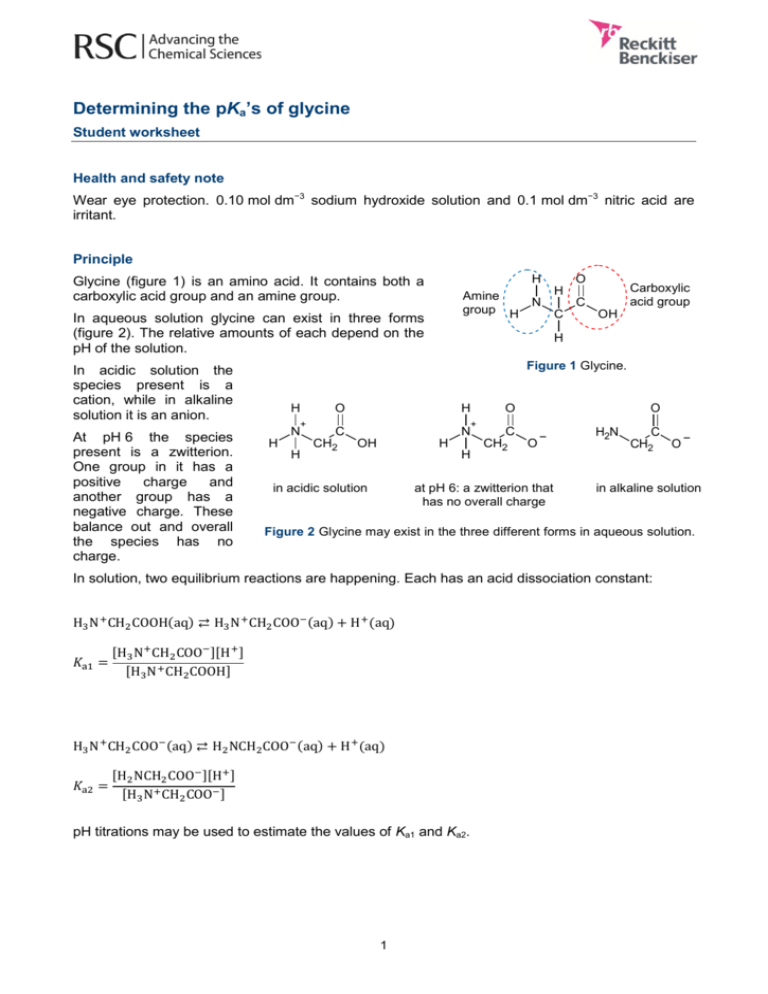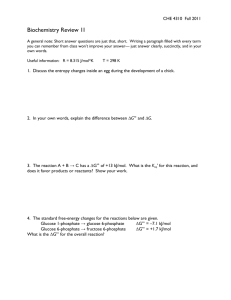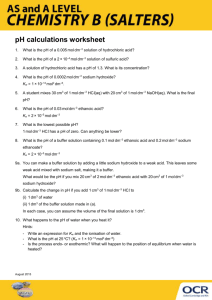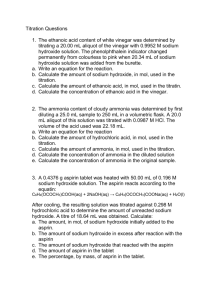Determining the pKa's of glycine
advertisement

Determining the pKa’s of glycine Student worksheet Health and safety note Wear eye protection. 0.10 mol dm−3 sodium hydroxide solution and 0.1 mol dm−3 nitric acid are irritant. Principle H Glycine (figure 1) is an amino acid. It contains both a carboxylic acid group and an amine group. Amine group H In aqueous solution glycine can exist in three forms (figure 2). The relative amounts of each depend on the pH of the solution. N Carboxylic acid group C C OH H Figure 1 Glycine. In acidic solution the species present is a cation, while in alkaline solution it is an anion. At pH 6 the species present is a zwitterion. One group in it has a positive charge and another group has a negative charge. These balance out and overall the species has no charge. O H H + N H H H O + N C CH2 OH H H in acidic solution O C − CH2 OH at pH 6: a zwitterion that has no overall charge O H2N C − CH2 OH in alkaline solution Figure 2 Glycine may exist in the three different forms in aqueous solution. fferent forms in aqueous solution In solution, two equilibrium reactions are happening. Each has an acid dissociation constant: pH titrations may be used to estimate the values of Ka1 and Ka2. 1 Equipment and materials Balance 3 50 cm burette Spatula pH probe and pH meter 250 cm beaker Glycine Glass stirring rod 0.10 mol dm−3 sodium hydroxide solution − Irritant 100 cm3 measuring cylinder 0.05 mol dm−3 potassium nitrate(V) solution 10 cm3 pipette and pipette filler 0.1 mol dm−3 nitric acid − Irritant 3 Method 1. Fill a burette with 0.10 mol dm−3 sodium hydroxide solution. 2. Weigh 0.10 g of glycine into a 250 cm3 beaker. Add 100 cm3 of 0.05 mol dm−3 potassium nitrate solution. Stir with a glass rod to dissolve the solid. 3. Place a pH probe in the solution and connect it to a pH meter. Note: The pH probe should have been calibrated using suitable buffer solutions. Measure the pH of the solution. 4. Pipette 10 cm3 of 0.10 mol dm−3 nitric acid into the beaker and measure the pH of the solution. 5. Add 1 cm3 quantities of sodium hydroxide solution from the burette to the beaker, stirring well between additions and recording the pH. Continue until a total of 40 cm3 has been added. Note: Plot a graph of pH against volume of sodium hydroxide added as you go along. Processing data The graph of pH against volume of 0.10 mol dm3 sodium hydroxide solution added should look similar to the one in figure 3. End point 1 corresponds to the complete reaction: End point 2 corresponds to the complete reaction: 1. Calculate the end points 1 and 2 from the number of moles of glycine used (relative molecular mass = 75) and, therefore, the volume of 0.10 mol dm−3 sodium hydroxide solution needed to react with it in a 1:1 mole ratio (end point 1) and a 2:1 mole ratio (end point 2). 2. Draw these lines on the pH titration graph (see figure 3). Point A on the graph corresponds to the pH at which glycine is present as a zwitterions. Estimate this value. Point B is when Point C is when . Determine a value for pKa1. . Determine a value for pKa2. 3. Finally, calculate Ka1 and Ka2. 2




